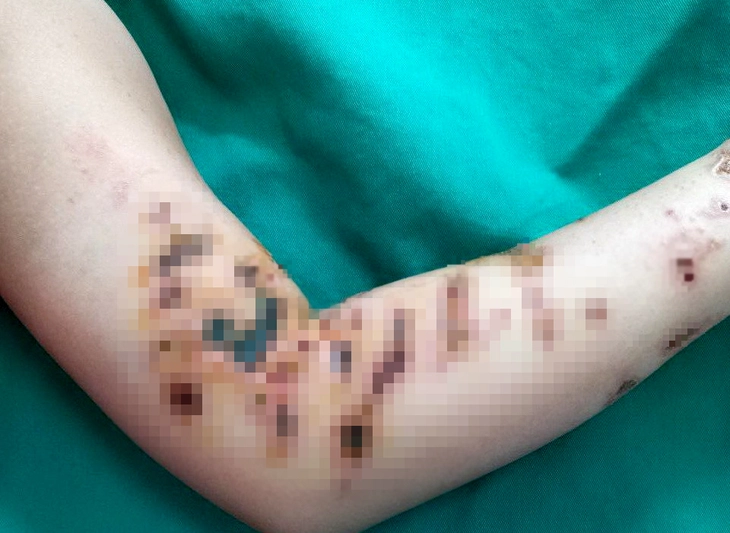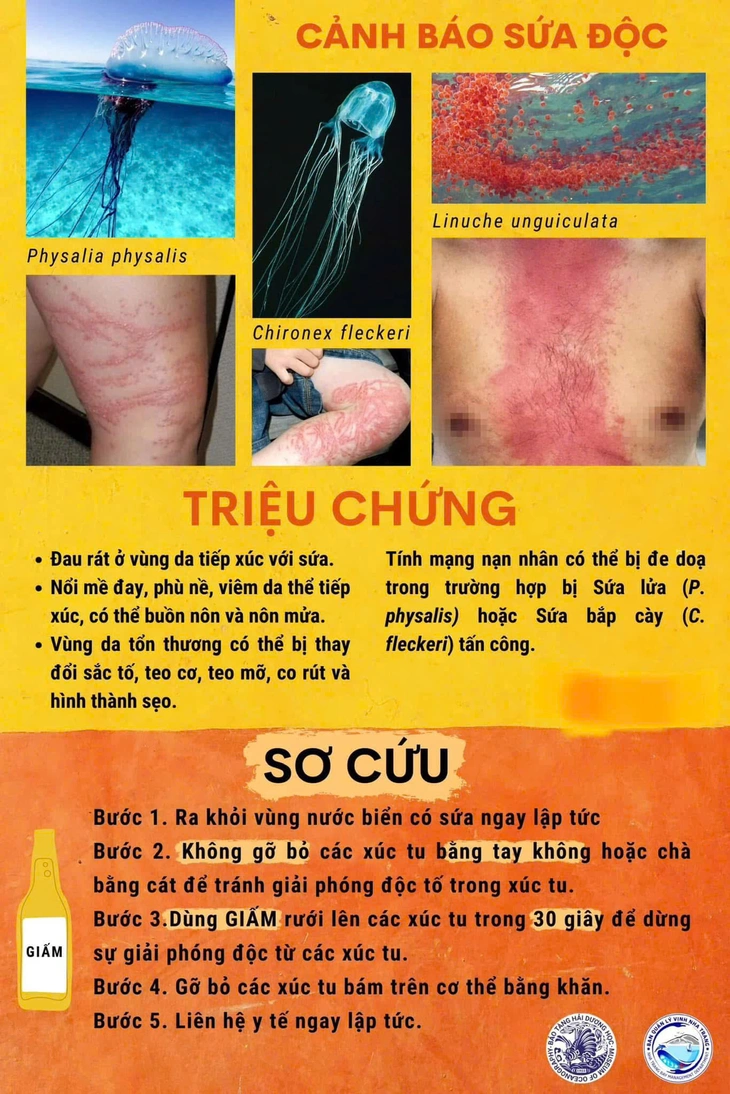Recently, fire jellyfish have appeared in the bathing area of Nha Trang beach, affecting locals and tourists participating in beach activities. Every summer, there are many cases of people being hospitalized due to fire jellyfish attacks.
Child patient attacked by jellyfish while swimming in the sea - Photo: Hospital provided.
What is a fire jellyfish?
The fire jellyfish ( scientific name Physalia physalis) is a species of jellyfish and its symbionts classified as representatives of the family Physaliidae, which is a monotypic family and genus. They possess venomous tentacles that can cause intense pain.
According to experts, fire jellyfish are commonly found in many Vietnamese waters during the summer. They attack human skin with their venomous tentacles.
Mild cases may result in redness, itching, burning, and blisters on the skin. More severe stings, if not treated promptly, can cause shortness of breath, dizziness, lightheadedness, nausea, and even heart failure leading to death.
Every year, many coastal areas regularly issue warnings about the sighting of fire jellyfish, advising tourists to be cautious and how to handle cases of fire jellyfish attacks.
What to do if you are attacked by a stinging jellyfish?
Dr. Nguyen Thi Thanh Thuy, head of the Department of Skin Diseases in Women and Children (Central Dermatology Hospital), shared that every year during the summer, they often receive cases of skin damage caused by jellyfish stings.
"Jellyfish stings cause severe skin irritation. When jellyfish tentacles come into contact with the human body, they release toxins, and contact with these toxins causes intense itching and burning sensations at the point of contact."
Therefore, if you accidentally touch a jellyfish while swimming, these toxins will stick to your skin and enter your body immediately.
"If patients do not receive timely treatment, the lesions will become increasingly serious, easily leading to secondary infections, abscesses, unsightly scarring, and even sepsis, which is life-threatening," Dr. Thuy stated.
Guide to symptoms and first aid for stings from fire jellyfish.
According to this expert, in cases where a jellyfish comes into contact with the skin, the patient should be quickly removed from the area where the jellyfish are, and then their condition should be quickly assessed for fatigue, dizziness, sweating, or rapid heartbeat.
If you experience any of these symptoms, call emergency services immediately.
In milder cases, first aid can be given by removing any tentacles still attached to the body with a clean instrument.
Clean the wound directly with seawater, vinegar, or baking soda for 15-30 minutes.
People should absolutely not use drinking water or fresh water to rinse off jellyfish stings, as this can increase the release of venom and cause burning and stinging. Afterwards, bandage the wound, being careful to avoid rubbing or scratching the affected area.
Patients who experience any unusual symptoms after being stung by a jellyfish should seek medical attention for timely advice and treatment.
Doctors also advise that before going swimming in the sea, everyone should seek information from local people to know which areas have a lot of jellyfish and should avoid swimming there.
When you see jellyfish, especially colorful ones, absolutely do not go swimming to avoid being attacked. For children, they should wear full-coverage swimwear to minimize the risk of jellyfish contact with sensitive skin areas and prevent severe allergic reactions.
How are fire jellyfish different from other jellyfish species?
Currently, there are two species of jellyfish in Vietnam's waters: the common jellyfish, which are used as food or processed into various products, and the venomous jellyfish, which can affect health upon contact.
The fire jellyfish is one of those venomous jellyfish species. Fire jellyfish come in a wide variety of shapes, and can be transparent or brightly colored.
WILLOW
Source: https://tuoitre.vn/mua-tam-bien-can-trong-voi-sua-lua-2025051510113181.htm









































































































Comment (0)